Secrets to Jaw Crusher Maintenance: Save Costs, Boost Output
3907Optimize jaw crusher maintenance. Prevent breakdowns, maximize uptime, and ensure consistent, high-efficiency crushing with our practical guide.
View detailsSearch the whole station Crushing Equipment
Think crushing stone is just about buying a crusher? That’s a costly mistake. You’re facing a wall of complex equipment with no clear guide on how to be profitable.
Crushing stone isn’t a single purchase; it’s a systematic production process. It involves multiple stages like primary crushing, secondary/fine crushing, screening, and sand making, using a combination of equipment to turn raw stone into specified, valuable products.
At ZONEDING, we don’t just sell machines; we provide proven, profitable processes. Based on decades of our engineers’ field experience, we’ve seen too many projects fail from the wrong start. The key to success is understanding the process. It’s not about the machine; it’s about manufacturing a product that sells for a premium. Let’s break down this process step-by-step.
You think that just buying a crusher will turn stone into money. This idea is dangerous. It ignores cost, quality, and market demand—the very factors that determine your profitability.
No, crushing stone is far more complex than buying one machine. It is a complete stone production line system that requires scientifically configuring a series of equipment based on your raw material, final product requirements, and capacity goals to achieve the lowest cost per ton.
View how to crush stone as a manufacturing process, not a single action. You need to consider three core elements: input, process, and output. The input is your stone (its hardness, size, clay content). The process is your chosen equipment combination and workflow. The output is your finished aggregate (its size, shape, cleanliness). A mistake in any of these areas directly impacts your operational costs and final profit. For example, using the wrong crusher for highly abrasive material can multiply your wear part costs, quickly eating your profits. Therefore, the key to success is systematic thinking, not looking at a single piece of equipment in isolation.
| Consideration | Single Machine Mindset (Wrong Way) | System Mindset (Right Way) |
|---|---|---|
| Focus | “What crusher should I buy?” | “What is my stone and my target product?” |
| Decision Basis | Equipment price and surface-level specs | Material test reports, cost-per-ton, product quality |
| Result | High operating costs, non-spec product, frequent downtime | Low operating costs, premium product, stable production |
Your quarry has one-meter boulders piled up. Before they can be processed into valuable products, you must take the first step. A mistake here can paralyze the entire production line.
For the primary crushing of large rocks, the most common and reliable choice is a Jaw Crusher. Its job is to break down massive boulders that cannot be fed into subsequent machines into fist-sized or smaller, manageable pieces.
Primary crushing is the head of the entire aggregate production process. Its only mission is size reduction in the most reliable, powerful way. Why is the Jaw Crusher the top choice for this stage? Because its structure is simple, robust, and has a large feed opening. There’s an unbreakable physical rule for selecting a jaw crusher: its feed opening must be wider than the largest rock you need to process. You can’t negotiate with physics. The jaw crusher uses compression from two jaw plates (one fixed, one moving) to break rock. This compression method is highly effective for hard, abrasive materials (like crushing granite) and is relatively easy to maintain. It is the hardest-working, most fundamental workhorse of the production line.
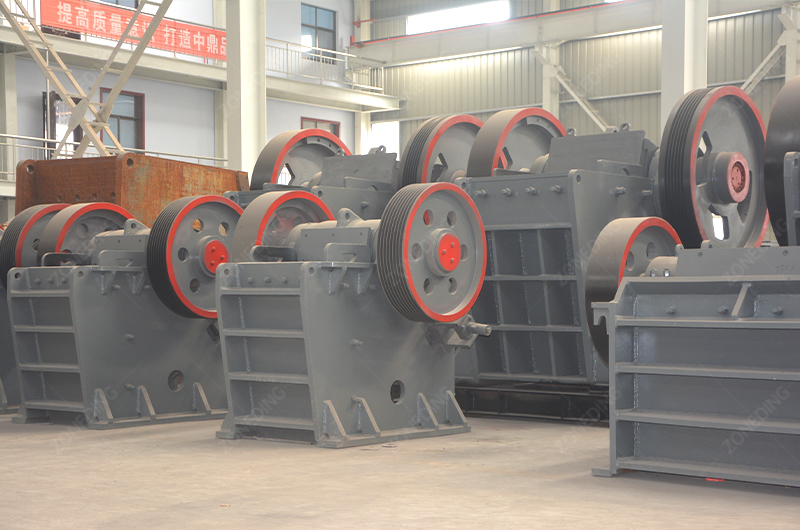
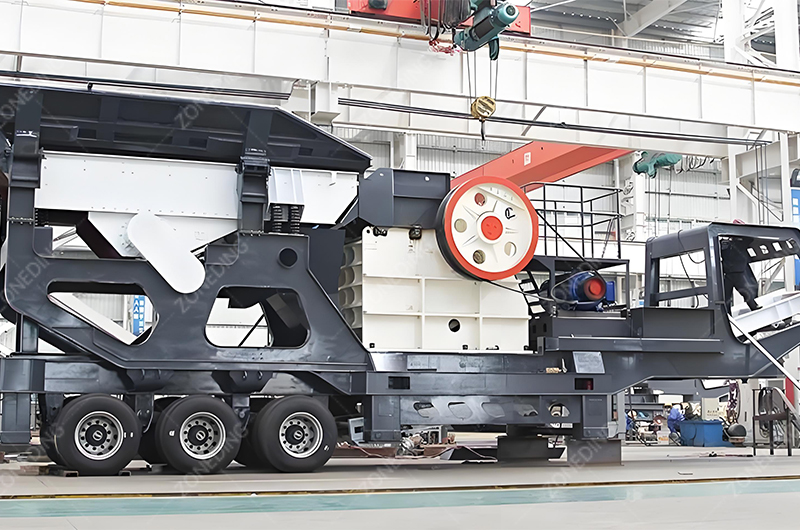
| Feature | Description | What It Means for You |
|---|---|---|
| Large Feed Opening | Can accept large, run-of-mine raw material directly. | No need for secondary blasting or breaking of raw material, saving costs. |
| Compression Principle | Breaks rock through powerful squeezing. | Very effective for hard, abrasive materials, leading to longer wear part life. |
| Robust Structure | Simple design built to withstand huge impact and stress. | Low failure rate and stable operation, ensuring the continuity of the entire plant. |
After being processed by the jaw crusher, the rocks are smaller, but they are still a pile of irregularly sized and shaped semi-finished products. These cannot be sold directly; you need to process them further.

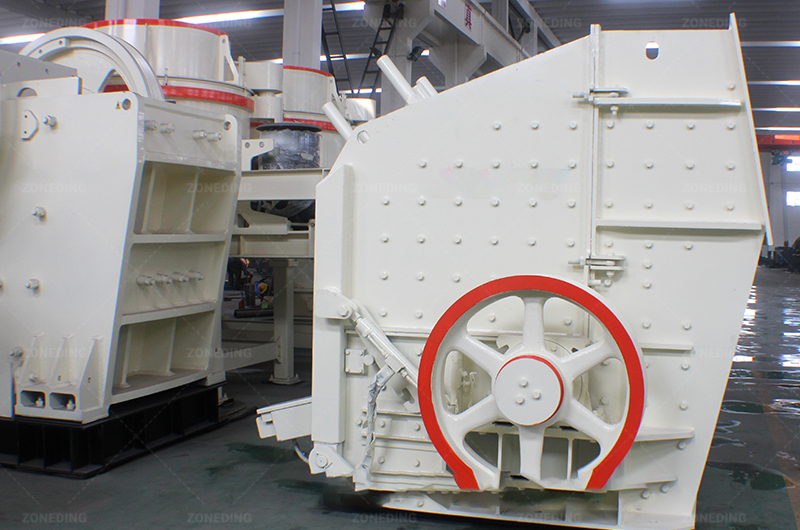
The goal of the secondary and fine crushing stage is to precisely control product size and improve particle shape. For hard materials, a Cone Crusher is typically used; for medium-to-low hardness materials, an Impact Crusher can be chosen for better particle shape.
This stage is key to determining your product’s value. The choice of equipment depends entirely on your raw material’s properties.
| Feature | Cone Crusher | Impact Crusher |
|---|---|---|
| Suitable Material | Hard, highly abrasive materials (granite, river stone) | Medium-to-low hardness, low-abrasion materials (limestone) |
| Crushing Principle | Laminated Compression | High-Speed Impact |
| Product Shape | Good, polyhedral | Excellent, perfectly cubical |
| Wear Part Cost | Relatively low | Relatively high (extremely high with hard materials) |
Now, your crusher is outputting rocks of all sizes. But they are mixed together like a pile of groceries, with low value. You need to turn them into clearly specified products that can be sold at different prices.
Screening uses a Vibrating Screen to separate the crushed mixture into multiple final products according to different aggregate sizes. At the same time, it sends oversized material back to the crusher, creating a ‘closed circuit.’
If the crusher is the heart of the plant, the Vibrating Screen is its ‘cash register.’ Without it, you cannot produce a qualified product. The vibrating screen uses screen meshes of different apertures to separate the mixture into:
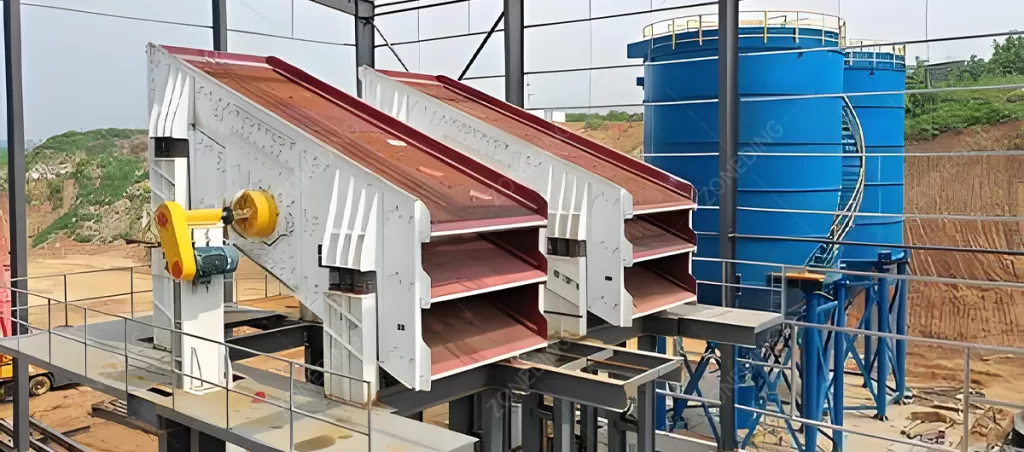
In the market, crushed stone is a commodity, but high-quality manufactured sand is a premium product. Premium means higher prices and profits. If you want to stand out from the competition, you must learn to make premium products.
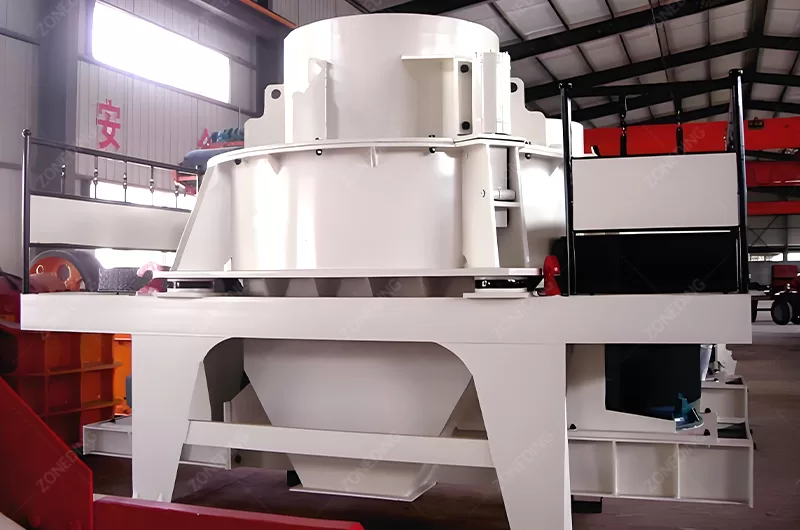

To produce excellently shaped, cubical manufactured sand, a specialized Sand Making Machine (also known as a VSI crusher) is required. It uses a ‘rock-on-rock’ principle to shape the material, turning flaky particles into high-value cubical ones.
Why is particle shape so important? Because in concrete and asphalt, cubical particles have the minimum voids. This means less of the expensive binder (cement or asphalt) is needed to achieve high strength. This saves your customers significant costs, and they are willing to pay a higher price for your quality product. A professional Sand Making Machine (VSI) is the ultimate weapon to achieve this. It uses a high-speed rotor to throw stones out, causing them to collide with each other at high velocity inside the crushing chamber. This ‘rock-on-rock’ method breaks the stone along its natural cleavage planes, thus producing the most perfect cubical shape. Often, even material processed by a cone crusher is sent to a VSI for a final ‘shaping’ step to enhance its value. The produced sand, after being cleaned by a Sand Washing Machine, becomes a high-standard, clean aggregate.
You know you need a crushing system, but should you build it in a fixed location, or make it mobile? This is a strategic business decision, not just a simple technical choice.

Choose a stationary plant for long-term, large-scale production in one location. Choose a mobile crushing plant for maximum flexibility, suitable for multi-site jobs, rental businesses, or short-term projects.
Neither option is absolutely better; it’s about what fits your business.
| Decision Factor | Stationary Plant | Mobile Crushing Plant |
|---|---|---|
| Use Case | Large mines, quarries, long-term stable production | Contracting, multi-site operations, C&D recycling, rentals |
| Flexibility | Low, permanently installed | High, can be relocated anytime |
| Initial Investment | High (includes land and civil works costs) | Relatively lower |
| Deployment Speed | Slow, requires months of construction | Fast, can be operational in days |
| Cost Per Ton | Lower in long-term operation | Higher, but saves on transport costs |
Before you contact any manufacturer, you need to do your homework. If you can’t even describe your own needs, you’ll only get a generic, expensive, and impractical proposal.
Before planning your stone crushing process, you must answer four core questions: 1. What is your raw material (type, hardness)? 2. What is its maximum feed size? 3. What finished product sizes do you need? 4. What is your required capacity (tons per hour)?
As a manufacturer, ZONEDING can only design an optimal and cost-effective solution for you after receiving this key information. The more detailed your information, the more precise our solution will be. Define your project clearly before you even think about equipment prices. This is the foundation of all professional decision-making.
| Core Question | Why It’s Critical | Example |
|---|---|---|
| 1. Material Type & Hardness | Determines if you should use compression (Jaw, Cone) or impact crushing. | “High-silica granite, Mohs hardness of 7” |
| 2. Max Feed Size | Determines the required opening for your primary crusher (Jaw Crusher). | “The largest rock from the excavator is 800mm” |
| 3. Required Output Sizes | Determines how many crushing stages and screen decks you need. | “I need to produce 0-5mm, 5-20mm, and 20-40mm” |
| 4. Required Capacity (tph) | Determines the specific model and size of every machine in the line. | “I need to produce 300 tons per hour of finished product” |
| 5. Special Conditions | High clay or moisture content can clog crushers and requires special pre-treatment. | “Raw material has 15% clay content, high moisture in rainy season” |
Crushing stone is not a transaction; it’s a science and a business. The secret to success is understanding your raw material, defining your goals, and choosing the right process and equipment combination to achieve them.
Optimize jaw crusher maintenance. Prevent breakdowns, maximize uptime, and ensure consistent, high-efficiency crushing with our practical guide.
View detailsUnlock the economic and environmental benefits of tailings recycling. Discover how this sustainable solution transforms mining waste into valuable materials.
View detailsDiscover essential gravity separation methods for gold recovery: jigging, spirals, shaking tables, and sluices, boosting mining efficiency.
View detailsLearn simple, effective methods to identify gold ore. Our guide covers key tests like streak and hardness to help you tell real gold from fool's gold.
View detailsWe use cookies to ensure that we give you the best experience on our website. If you continue to use this site we will assume that you are happy with it.
Privacy Policy